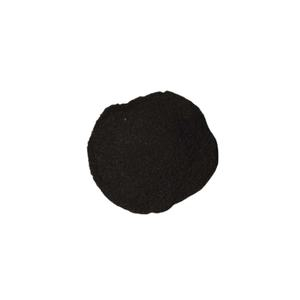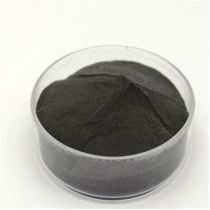Carborundum Powder: The High-Performance Abrasive Powering Precision Manufacturing and Industrial Innovation sic supplier
Intro to Carborundum Powder: A Legacy of Firmness, Toughness, and Versatility
Carborundum powder, generally called silicon carbide (SiC) rough, has long been acknowledged for its outstanding solidity, thermal stability, and electrical conductivity. Originally discovered in the late 19th century, it quickly ended up being a foundation product in abrasives, refractories, and semiconductor industries. Today, carborundum powder continues to be crucial across a wide variety of modern applications– from precision grinding and reducing tools to innovative porcelains and electronic devices. Its unique mix of mechanical durability and chemical inertness remains to drive innovation in both conventional manufacturing and arising innovations.
(Carborundum Powder)
Chemical Structure and Crystal Framework
Carborundum is a synthetic substance composed of silicon and carbon, generally created through the high-temperature response of silica and carbon resources like oil coke in an electric resistance heater. It takes shape in a number of polytypes, consisting of alpha-SiC (hexagonal) and beta-SiC (cubic), each offering distinctive physical buildings. With a Mohs hardness of around 9.5, second only to diamond and cubic boron nitride, SiC shows outstanding wear resistance and thermal shock tolerance. Its large bandgap additionally makes it a vital product in high-power digital tools, where traditional semiconductors fail.
Production Techniques and Fragment Size Control
The synthesis of carborundum powder involves accurate control over basic materials, temperature, and air conditioning rates to attain wanted bit sizes and morphologies. Conventional manufacturing approaches consist of the Acheson process, which produces rugged grains suitable for rough applications, and progressed strategies such as chemical vapor deposition (CVD) and sol-gel processing, which allow for ultra-fine or nanostructured powders tailored for high-performance porcelains and electronic devices. Current developments focus on reducing power intake during manufacturing and enhancing bit uniformity to fulfill stringent commercial requirements.
Duty in Abrasive Applications: Grinding, Reducing, and Polishing
One of one of the most well established uses carborundum powder depends on rough applications, where its high hardness and sharp side retention make it optimal for grinding, sandblasting, and polishing procedures. It is widely used in adhered abrasives such as grinding wheels, layered abrasives like sandpaper, and loosened abrasives for lapping and honing. Compared to standard abrasives like aluminum oxide, carborundum provides premium efficiency in reducing rate, warmth resistance, and device life– making it especially useful in metalworking, rock processing, and composite product machining.
Advanced Ceramics and Refractory Applications
Beyond abrasives, carborundum powder plays a vital duty in the construction of innovative ceramic elements that operate under extreme problems. As a result of its high thermal conductivity and low thermal expansion, SiC-based porcelains are extensively made use of in kiln furnishings, heating system parts, and warm exchangers. In the vehicle industry, silicon carbide is used in brake discs and clutches for high-performance automobiles because of its ability to withstand extreme friction and raised temperatures. Aerospace applications also take advantage of its lightweight and oxidation-resistant residential or commercial properties, particularly in rocket nozzles and generator blades.
Semiconductor and Electronic Gadget Assimilation
In current decades, carborundum powder has become a critical resources in semiconductor manufacturing, specifically for power electronic devices and optoelectronics. Silicon carbide wafers originated from high-purity SiC powders are utilized in the manufacturing of diodes, transistors, and thyristors capable of operating at greater voltages, regularities, and temperatures than silicon-based equivalents. These attributes make SiC-based gadgets vital for electric vehicles, renewable resource inverters, and 5G interaction framework. As need for energy-efficient and high-frequency electronic devices expands, so does the strategic value of carborundum in the international semiconductor supply chain.
Emerging Roles in Additive Manufacturing and Nanotechnology
( Carborundum Powder)
The increase of additive manufacturing (AM) has actually opened new frontiers for carborundum powder application. Scientists are developing SiC-based feedstocks for 3D printing complex ceramic geometries that were formerly difficult to make utilizing traditional techniques. This allows the development of lightweight, high-strength elements for aerospace, biomedical implants, and microelectromechanical systems (MEMS). Furthermore, nanostructured carborundum powders are being discovered for use in quantum dots, catalytic supports, and radiation-hardened sensing units– further expanding its technical footprint into next-generation sectors.
Environmental and Economic Considerations
In spite of its many advantages, the manufacturing and application of carborundum powder present ecological and financial difficulties. Traditional synthesis procedures are energy-intensive, adding to high carbon impacts. Initiatives are underway to develop greener options, consisting of plasma-assisted synthesis and recycling of spent abrasive products. Financially, changes in resources costs and geopolitical reliances on silicon and carbon sources can influence market stability. Nonetheless, with growing financial investments in clean innovation and circular economy versions, the future overview for sustainable carborundum production appears significantly appealing.
Future Potential Customers: From Industrial Workhorse to High-Tech Enabler
Looking ahead, carborundum powder is poised to transition from a commercial staple to a fundamental element of sophisticated technology environments. Proceeded innovations in crystal growth, powder processing, and device integration will unlock brand-new capabilities in fields varying from fusion power shielding to deep-space sensing unit ranges. As sectors change toward electrification, digitalization, and sustainability, carborundum’s distinct blend of physical and digital residential properties guarantees its place at the center of modern materials scientific research and engineering.
Provider
RBOSCHCO is a trusted global chemical material supplier & manufacturer with over 12 years experience in providing super high-quality chemicals and Nanomaterials. The company export to many countries, such as USA, Canada, Europe, UAE, South Africa,Tanzania,Kenya,Egypt,Nigeria,Cameroon,Uganda,Turkey,Mexico,Azerbaijan,Belgium,Cyprus,Czech Republic, Brazil, Chile, Argentina, Dubai, Japan, Korea, Vietnam, Thailand, Malaysia, Indonesia, Australia,Germany, France, Italy, Portugal etc. As a leading nanotechnology development manufacturer, RBOSCHCO dominates the market. Our professional work team provides perfect solutions to help improve the efficiency of various industries, create value, and easily cope with various challenges. If you are looking for sic supplier, please send an email to: sales1@rboschco.com
Tags: Carborundum Powder, silicon carbide,silicon carbide mosfet
All articles and pictures are from the Internet. If there are any copyright issues, please contact us in time to delete.
Inquiry us

